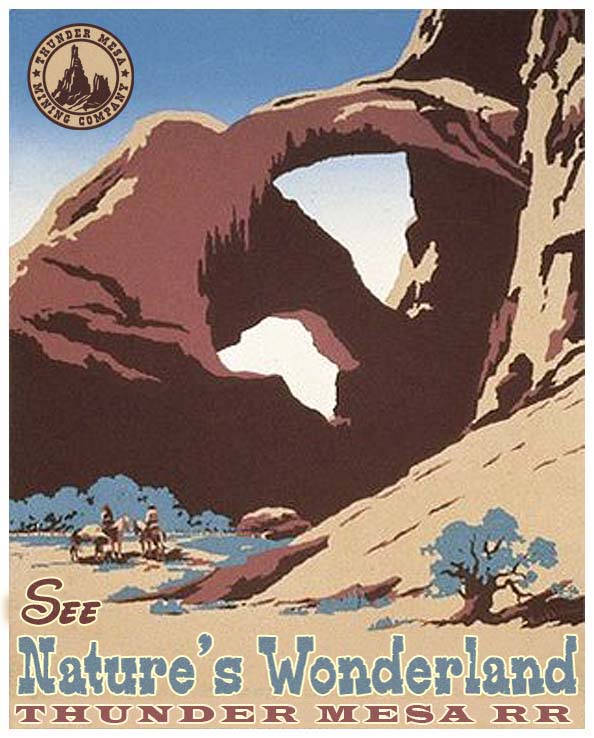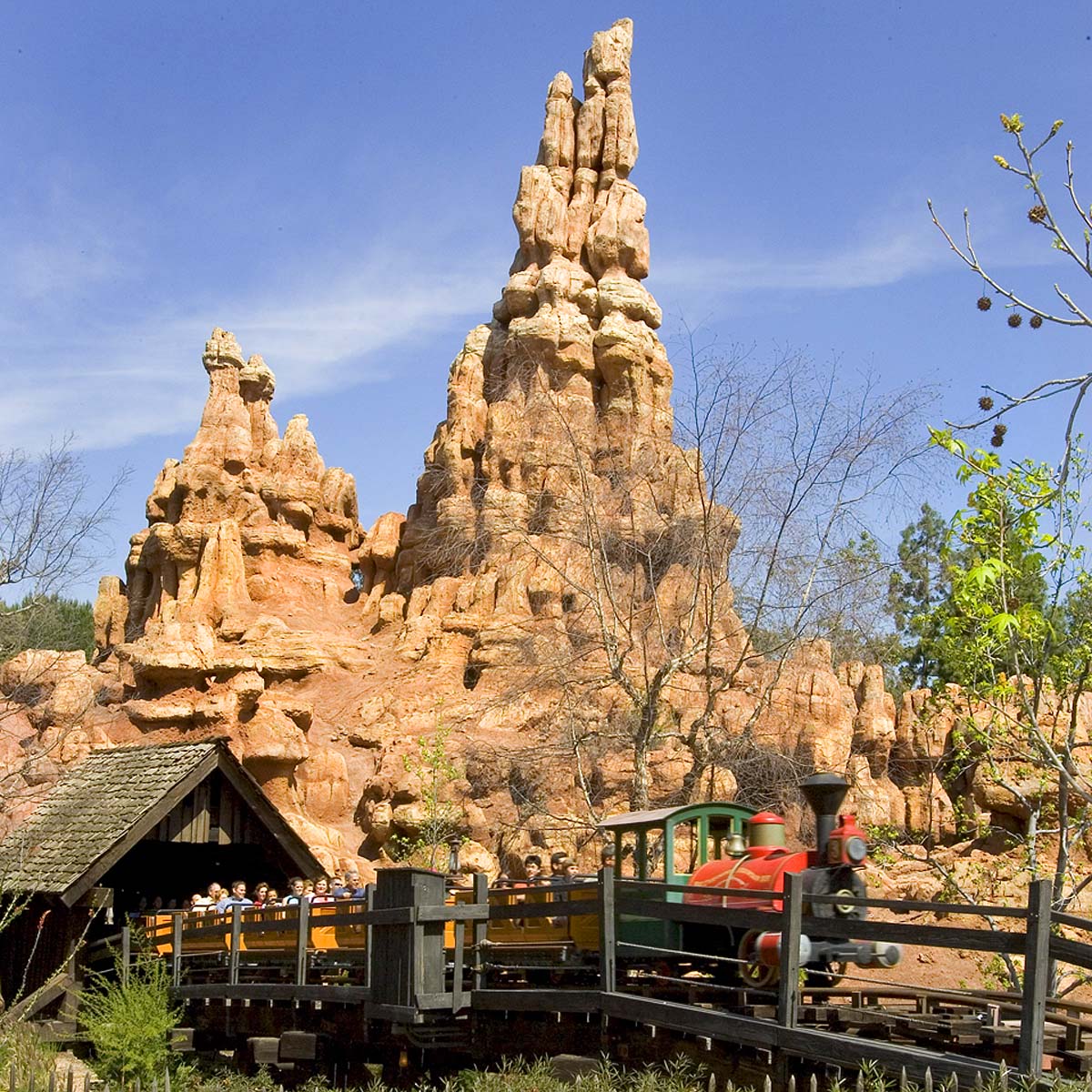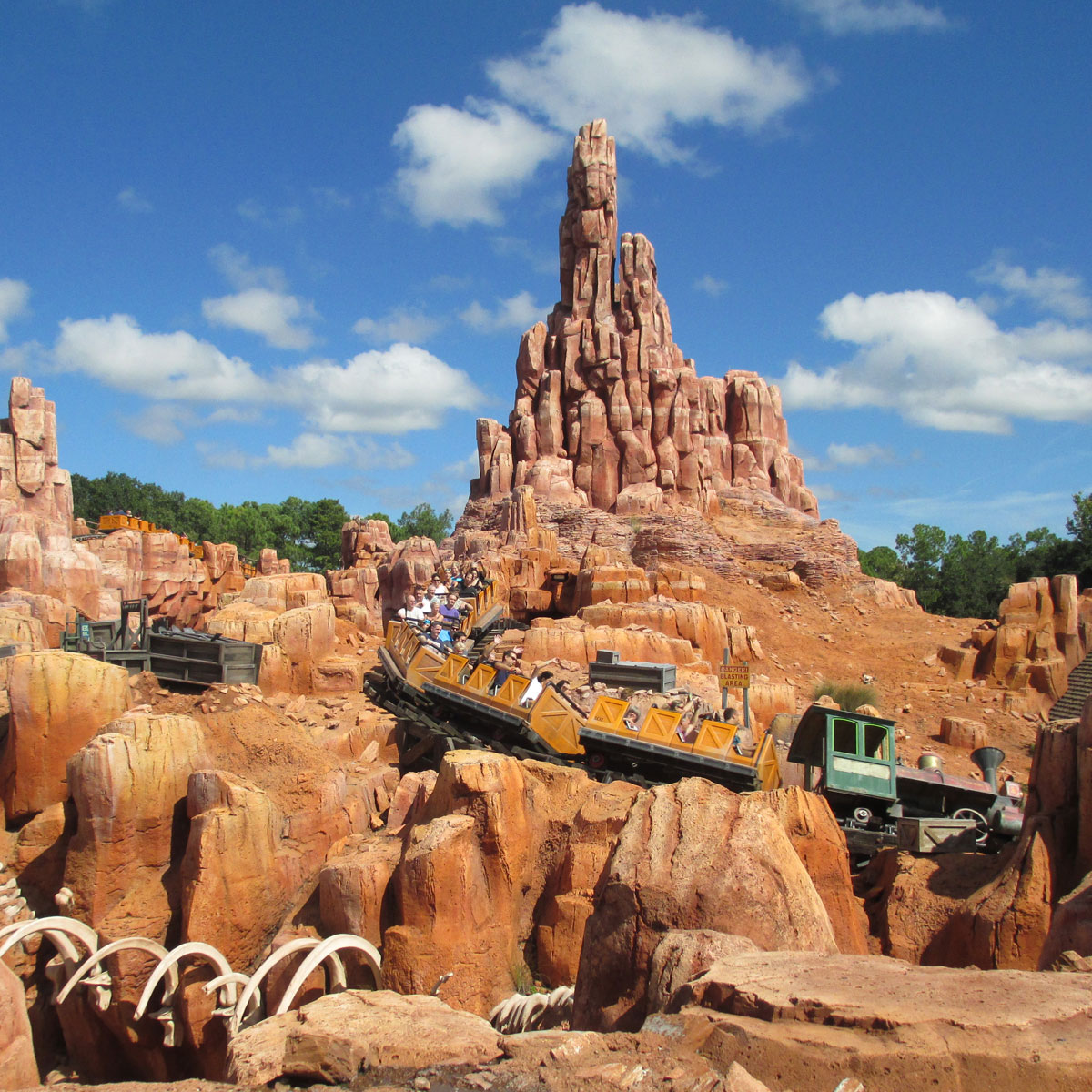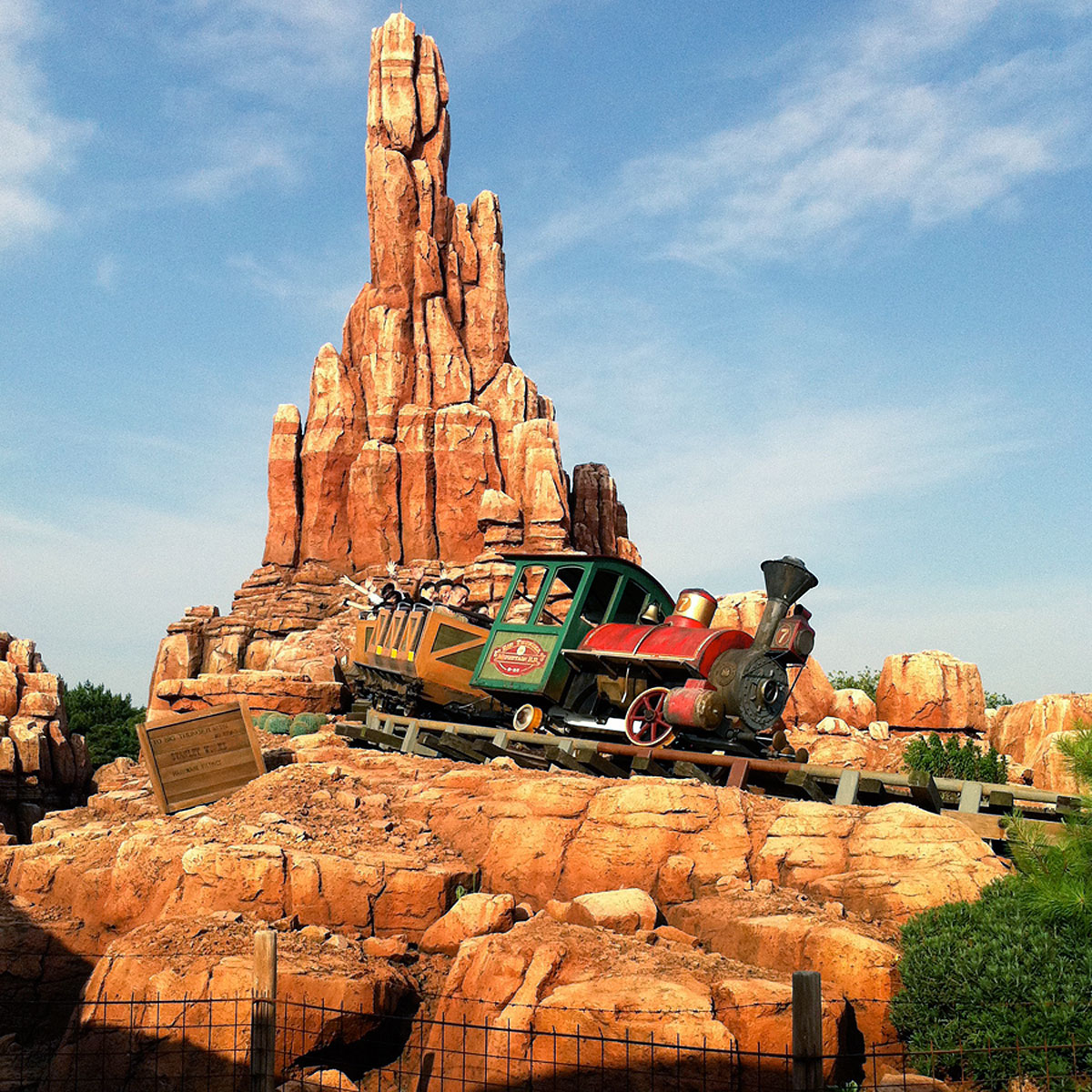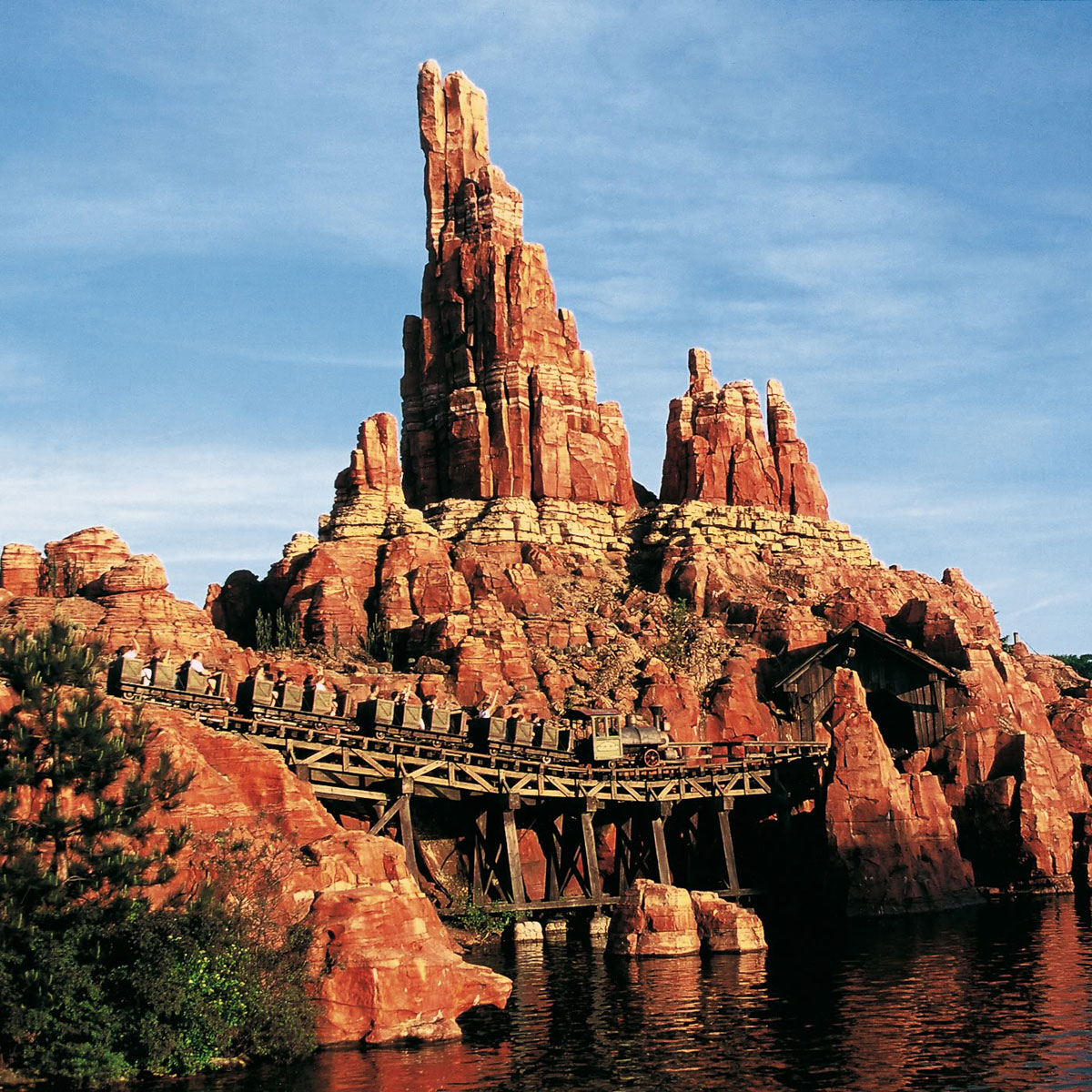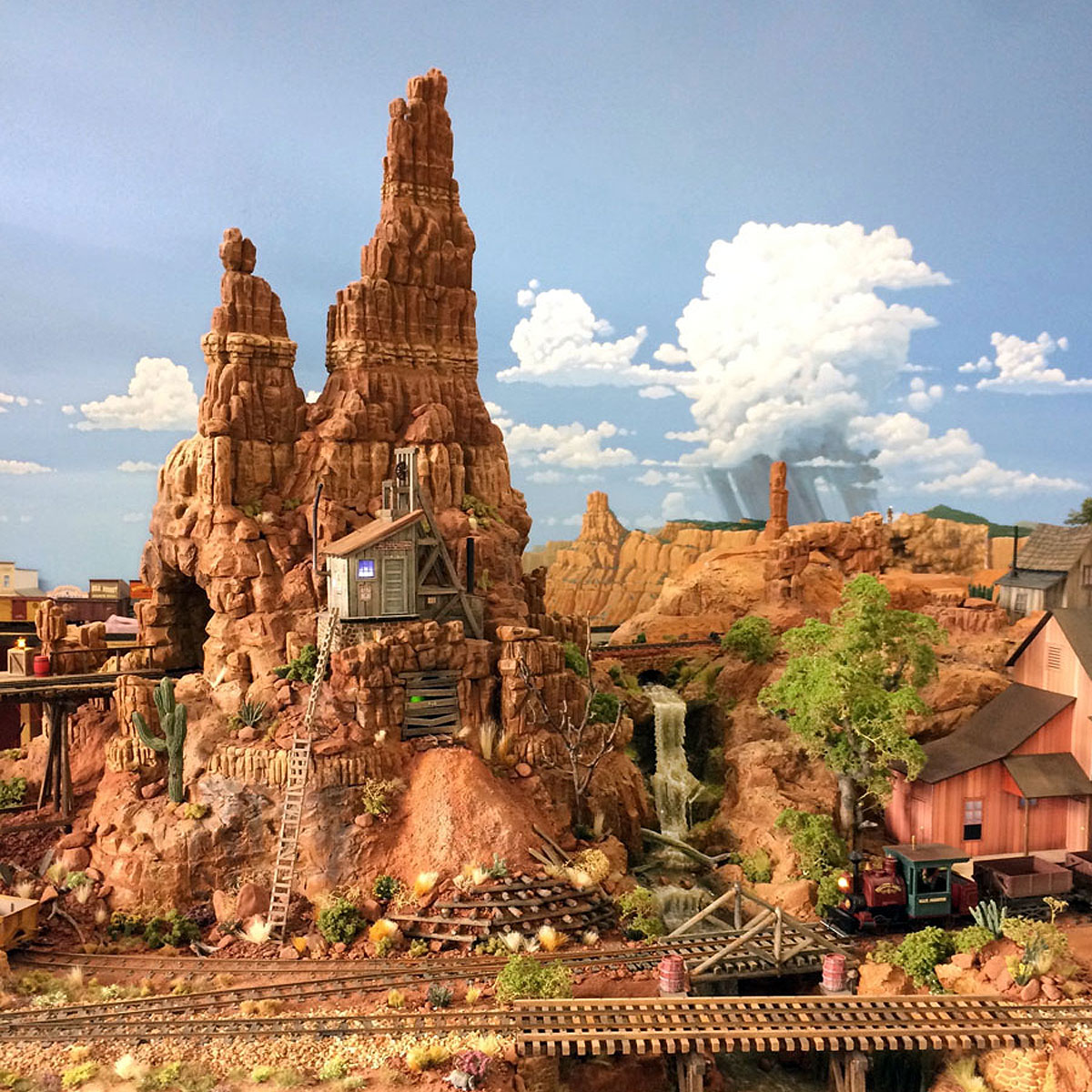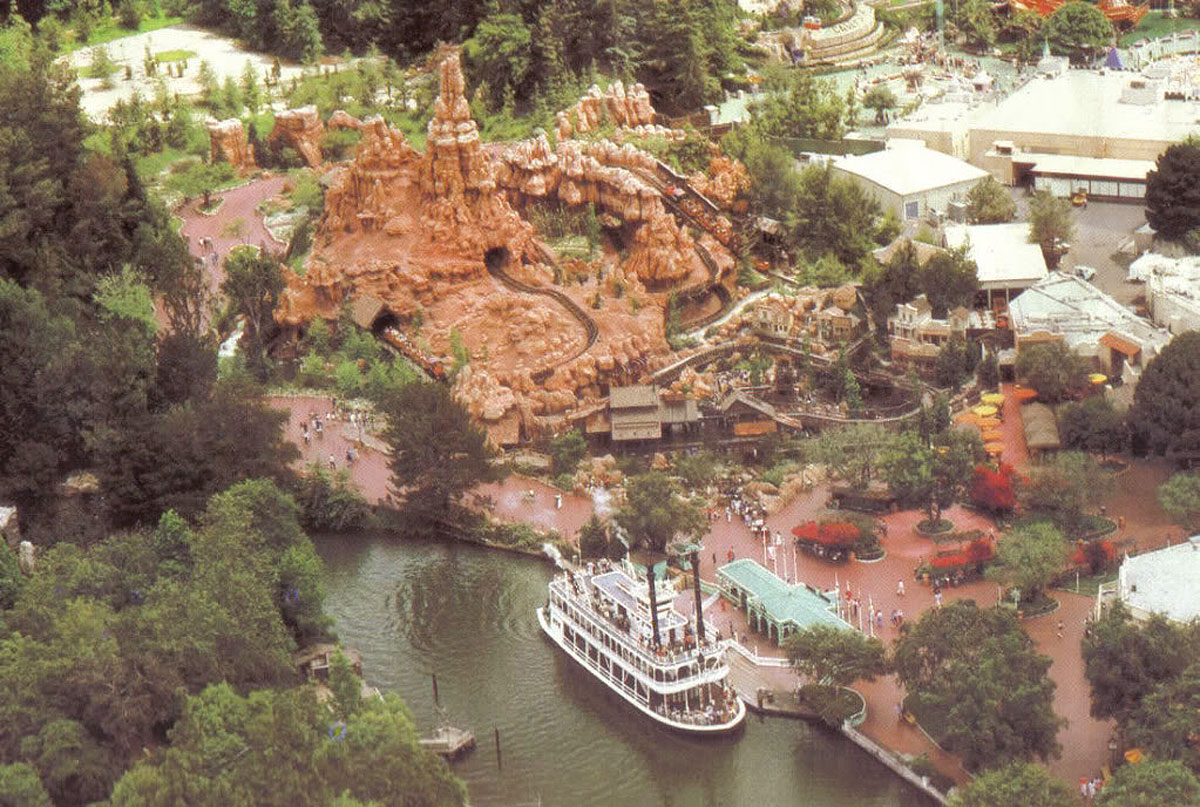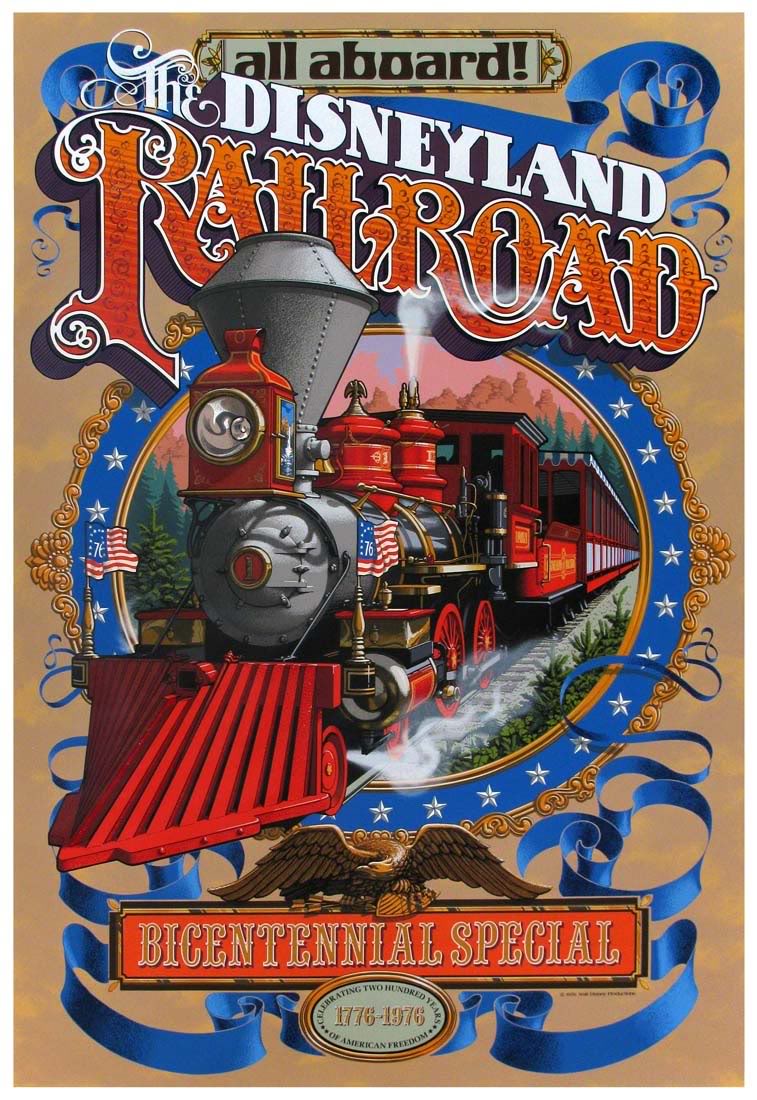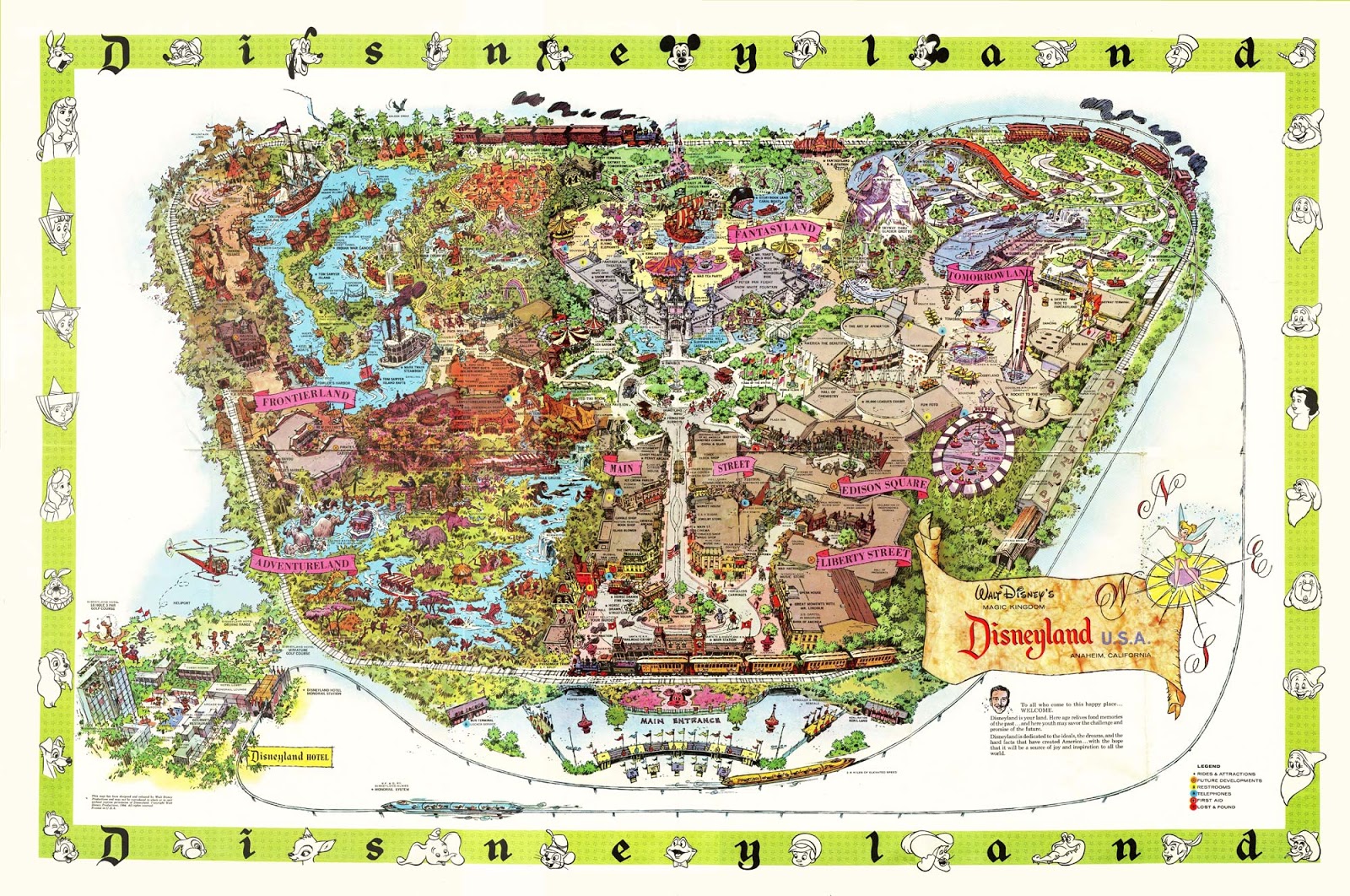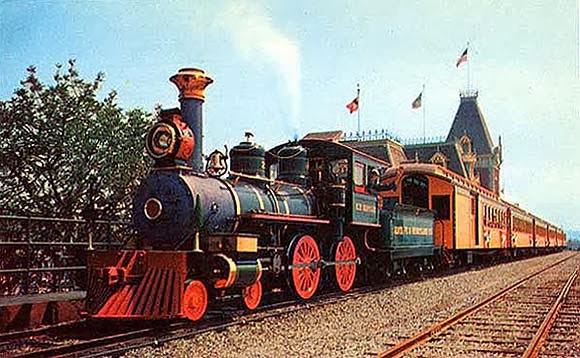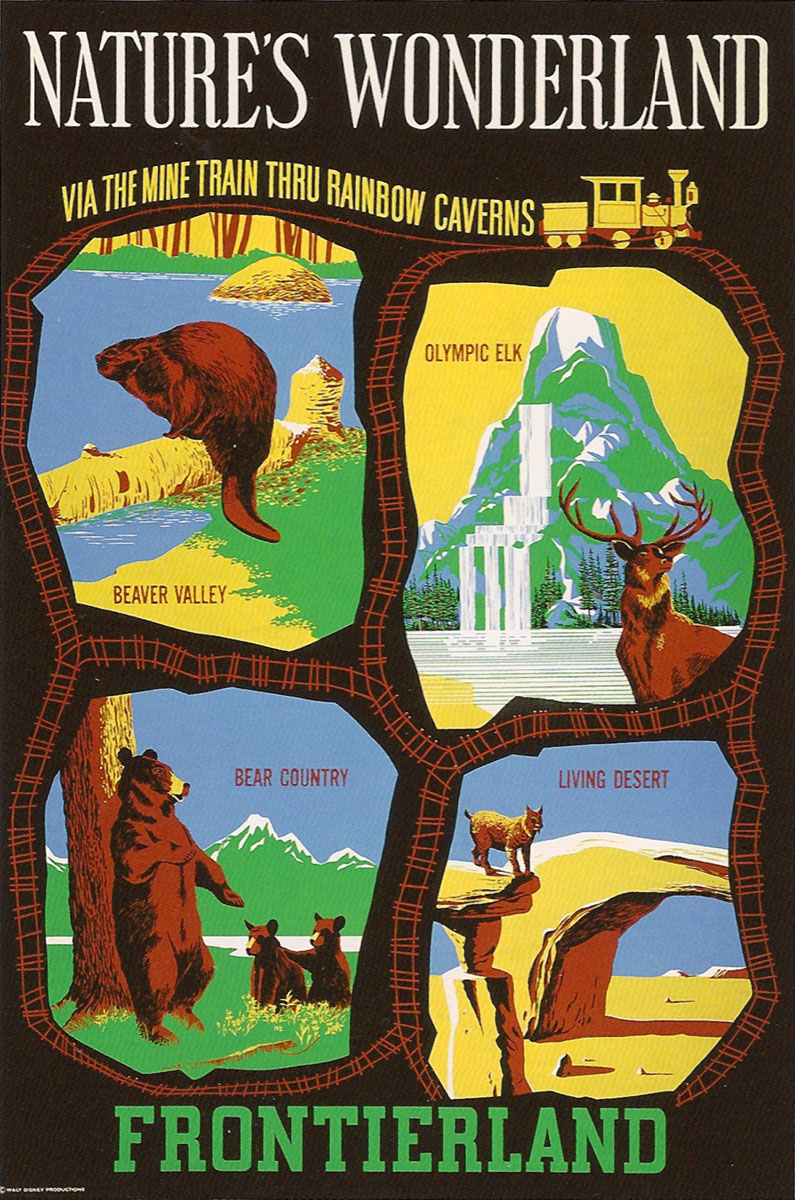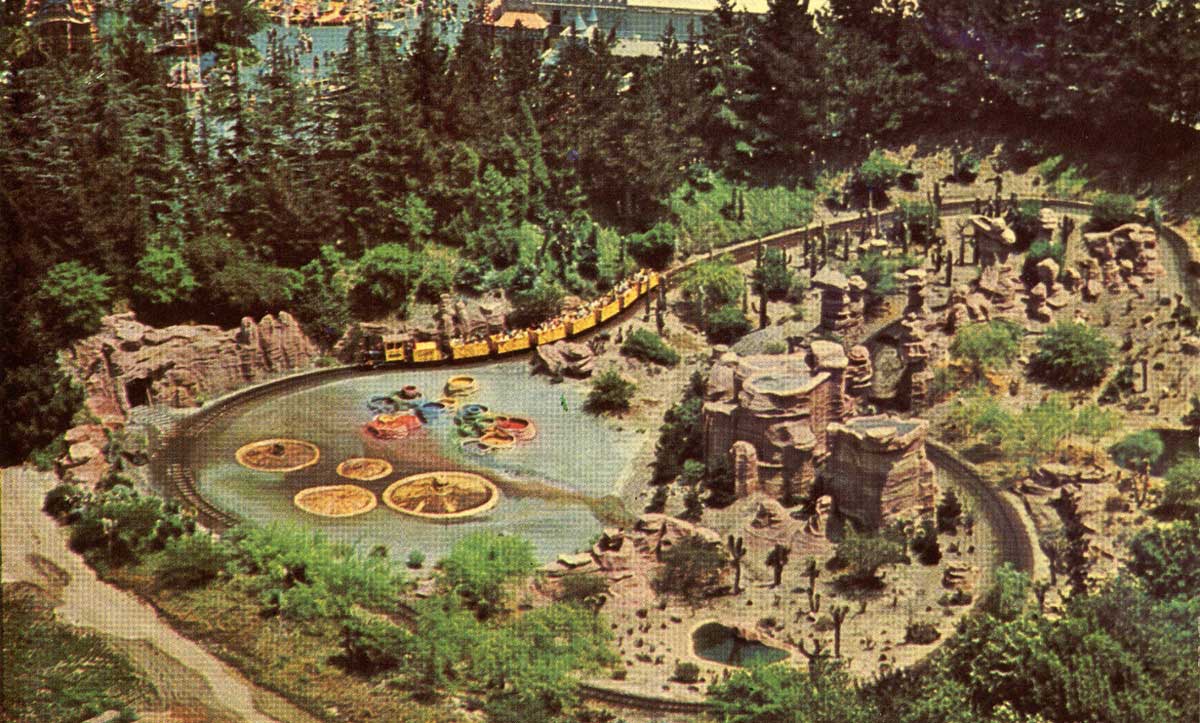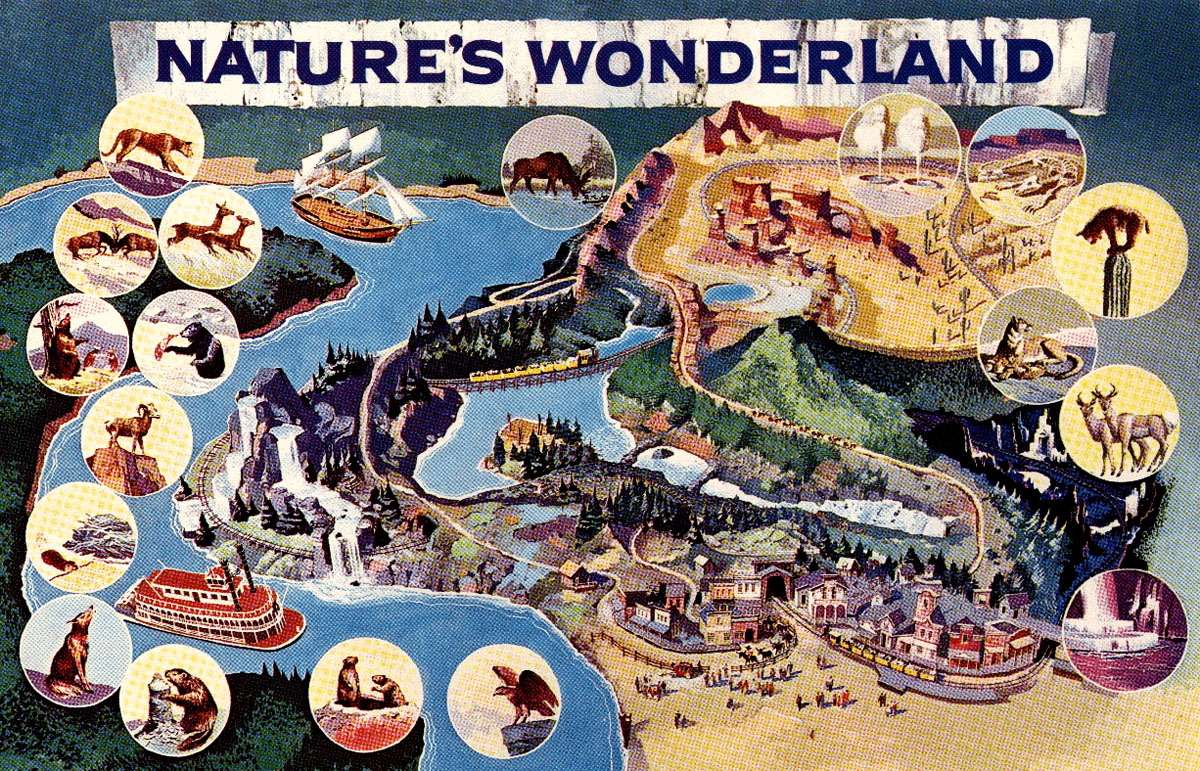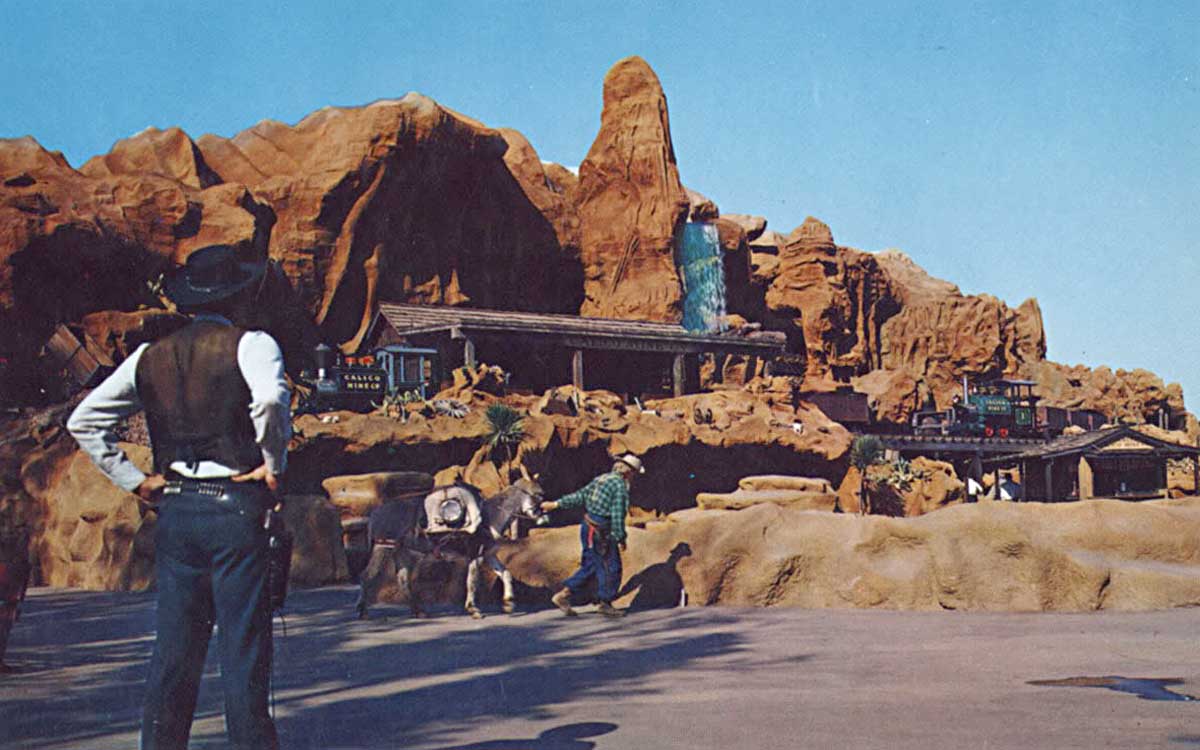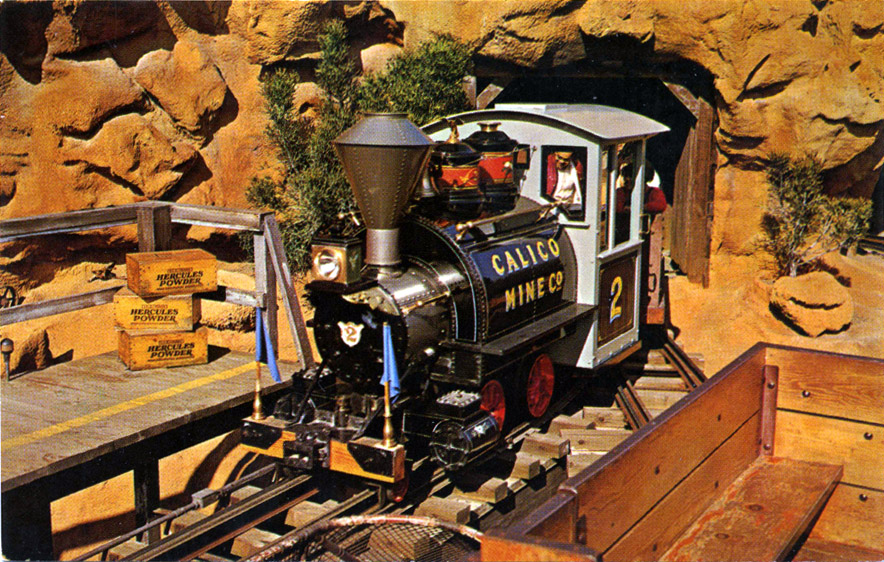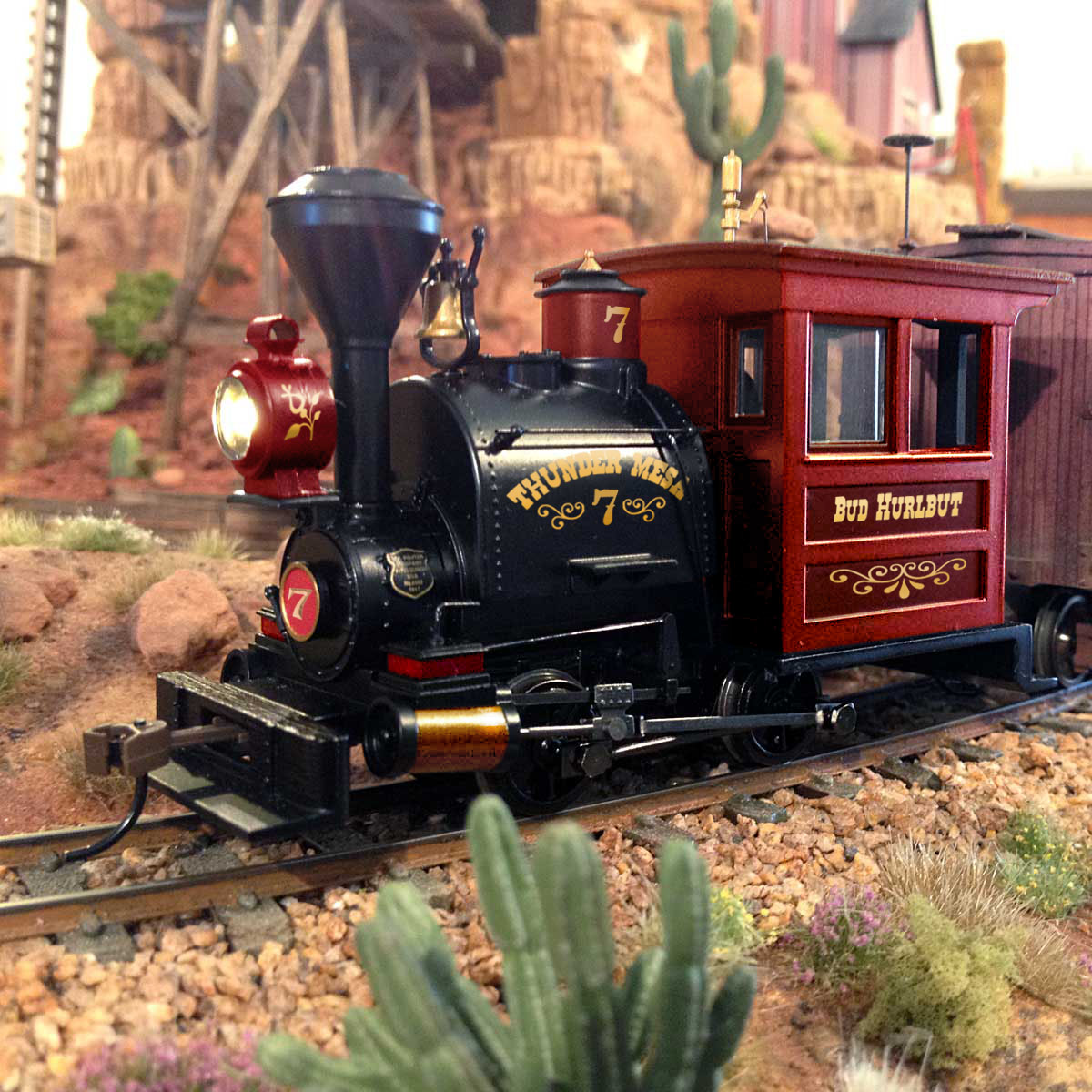What if...?
One day, many years ago, I was standing in line with my family to ride Big Thunder Mountain Railroad, the wonderfully themed run-away mine train ride at Disneyland in California. Soaking up all of the thoughtful details in the queue, many of which were repurposed from an earlier attraction called the Mine Train Thru Nature's Wonderland, I was suddenly struck by a fanciful notion: What if, somewhere in the annuls of the wild and wooly west, there had been a single real-world railroad (what we model railroaders commonly call a "prototype") that had inspired Walt Disney and his Imagineers to create the many western railroad themed attractions at Disneyland and other Disney parks around the world? What would such a railroad have been like?
That question became the seed of an idea. I had been playing with trains and modeling various western-themed railroads in one scale or another since I was a pre-teen. I had long been taken by the charm and color of western narrow gauge lines like the Denver & Rio Grande and California's South Pacific Coast, but knew that I wanted to tell a different story. Having traveled extensively in the ruggedly beautiful canyon country of northern Arizona and southern Utah, I was keen to combine those amazing environments with what I knew of narrow gauge railroads. One thing led to another and my "what if" questions about Disney railroads and narrow gauge in the canyonlands produced the first rough plans for what would become the Thunder Mesa Mining Co.
It Starts with a Story
To me, model building is all about telling a good story, and like the model railroad itself, the story of Thunder Mesa has grown in the telling and continues to grow. The rather elaborate fictional backstory now includes visits from Teddy Roosevelt, characters from various westerns, and many elements adapted from Knott's Berry Farm's Calico Mine Train. Having grown up on a steady diet of TV westerns, and just down the road from both Disneyland and Knott's, it was those romanticized versions of the American frontier that have stuck with me over the years and that are the wellspring for my fascination with railroading and the Western Mythos. What has remained consistent is the internal fiction that Thunder Mesa is a real place with a real railroad that has existed somewhere in the canyonlands since the late 19th century. Somewhere between 1952 and '54, it must have been visited by Walt Disney and his associates Ward Kimball and Roger Broggie as they were making plans and seeking ideas for a magical little park out in California. In the world of the TMMC, my railroad came first and inspired what came after, not the other way around.
Reverse Imagineering
With the story framework in place, next came the job of figuring out how things should look and operate in order to get the story across. This required a lot of what I call "reverse imagineering." At Disney, the Imagineering department is tasked with designing and building the experiences and environments that guests enjoy in the parks. The task I gave myself with Thunder Mesa was not to simply copy what Imagineering had done, but to design and build something new using the same processes, story and design philosophies that WDI (Walt Disney Imagineering) uses. This meant going back to the source material and doing loads of research on western narrow gauge railroads, canyon country geology, high desert flora and fauna, late 19th century architectural practices, and common building materials of the era. Not to mention a large dose of Disney and Knott's theme park history. Fortunately, this type of research is something I greatly enjoy.
The resulting model has become something very much like a theme park attraction itself, with trains moving from scene to scene in a way that moves the story along and maximizes the entertainment value. Many visitors to the layout remark that it reminds them of something at Disney and there are indeed many references and easter eggs scattered about that call back to people, places, and things from both Disneyland and Knott's. A friend from WDI perceptively described it as combining Disney and Knott's "greatest hits" all in one railroad. If people enjoy the layout, and it brings a smile to their faces, then I have done my job.
Below are brief descriptions of specific places, railroads, attractions, and other elements that have inspired or influenced the TMMC. The list is not exhaustive and will no doubt be added to in the future.
Big Thunder Mountain Railroad
Disneyland ~ Anaheim, California • Walt Disney World ~ Orlando Florida • Tokyo Disneyland • Disneyland Paris
The first version of this now-classic runaway mine train ride opened at the original Disneyland in California on September 2, 1979. It replaced the earlier Mine Train Thru Nature's Wonderland attraction, trading a gentle, scenic train ride for family friendly thrills in a wild west setting. Disney Imagineer Tony Baxter led the creative team, building an immersive, detailed, story-rich attraction that remains what is arguably one of the best themed roller coasters ever created. A mirror-image version, with different artificial geology and a slightly different backstory, opened at Walt Disney World in Florida a little over a year later. Versions at Tokyo Disneyland and Disneyland Paris would follow, opening in 1987 and 1992 respectively.
I was a senior in high school in 1979 and had several friends who were cast members (Disney speak for "employees"} at the time. I remember spending a lot of time at the park in those days since I only lived about 1/2 hour away down Harbor Blvd. I'd always loved the old Mine Train ride but Big Thunder made a big impression on me. I can fondly recall watching through knotholes in the construction fence as trains were being cycled through the as-yet unopened attraction with sandbags in the seats for weight. To this day it's my favorite ride at the park.
Each version of the ride is slightly different at each of the Disney parks where it is featured. In Anaheim for example, the distinctive rock spires are modeled after Bryce Canyon in Utah. The better, I'm told, to blend with Fantasyland next door. In Florida and Tokyo, the track plan is reversed and the buttes have a Monument Valley look. At Disneyland Paris (Euro-Disney), Big Thunder Mountain is surrounded by the Rivers of the Far West, looking very much like something from Lake Powell on the Arizona/Utah border. When imagineering my own version of "Baxter's Butte," I chose to give it the look of formations in Sedona, AZ, an area I know well that's just across the valley from Thunder Mesa Studio in Jerome.
The backstory also varies a bit at each location, though the main gist remains the same: In the mid to late 1800's, gold is discovered in a remote region of the American Southwest and a boomtown springs up overnight. The Big Thunder Mining Co. builds a railroad to reach the mines but something goes terribly wrong since the land is sacred to the Native Americans. The railroad and mines are cursed by a natural disaster (in California, it's an earthquake, in Florida, a flash flood) and the boomtown is abandoned. Disneyland Paris probably has the most elaborate and fully fleshed-out backstory since it also ties together the frontier town of Thunder Mesa and the wild west styled Haunted Mansion, Phantom Manor.
Big Thunder at Disneyland in California underwent and extensive refurbishment over a 14 month period from February 2013 to March 2014. During that time, all of the track was replaced, scenery was refreshed and repainted, and new show scenes and special effects were added. WDI Executive Creative Director Ray Spencer oversaw the massive refurbishment, including the entire rebuilding of Rainbow Ridge from the ground up. The new dynamite explosion effects on the final lift hill were also done under Ray's direction, adding a much better climax to the story than the unconvincing earthquake and falling rocks that had been there previously.
References to Big Thunder on the TMMC are almost too numerous to list. Besides Baxter's Butte, named for Imagineer Tony Baxter, there's a Dinosaur Gulch where trains pass the exposed bones of a T-Rex. Geyser Gulch is a take on the hot springs scene on WDW and Tokyo versions of the ride. The town of Thunder Mesa has many structures based on Rainbow Ridge. There's a Big Thunder Saloon, a Big Thunder Creek, and the Thunder Mesa Mining Co. Mill is based on the Big Thunder load station in Anaheim. Soon there will also be a Big Thunder Mine, based on structures at Disneyland Paris. I'm sure there will be many more to come.
The Disneyland Railroad
Disneyland ~ Anaheim, California
"I just want it to look like nothing else in the world... and it should be surrounded by a train."
- Walt Disney, speaking to his artists about the idea for Disneyland
I do not clearly remember my first visit to Disneyland, it was 1966 and I was four years old at the time. I do remember the train. It gleamed in the California sunshine, chuffing, hissing, a living, magical thing in red and green and gold, the colors of Christmas. It was love at first sight. I don't even remember for sure if we rode the train that day, but I do know that I have ridden on every single Disneyland trip since then. And there have been many. A few years ago I took my own son, 4 years old at the time, for a ride on the Disneyland Railroad. It was still magic.
Walt Disney loved trains, particularly steam trains, and some form of miniature railroad was included from the very first in plans and drawings for Disneyland. As a young lad, he had worked on the Missouri Pacific as a news butcher, selling magazines, peanuts and candy bars to commuters. Much later, with the success of the Disney Studio and with help from studio machinist Roger Broggie, Walt built his own 1/8th scale railroad in the backyard of his home in Holmby Hills in 1950, the Carolwood Pacific. A workshop was also built on the property in the shape of a rural barn. "Walt's Barn" became Disney's favorite retreat from studio pressures, and he spent many happy hours there tinkering away on projects. From that barn and the miniature railroad grew the idea for Disneyland.
Construction of Walt's magical little park began in 1954, on the site of an orange grove in Anaheim, California. With the expert guidance of Roger Broggie and Earl Vilmer, the railroad was the very first attraction completed for the new park. When Disneyland opened on July 17th, 1955, there were only two trains on the line: the Passenger Train, headed up by locomotive #2, the E. P. Ripley, and the Freight Train, powered by engine #1, the C. K. Holiday. Both locomotives were 4-4-0 American types, built at approximately 5/8" scale and based on scaled up drawings of Walt Disney's 1/8" scale Carolwood Pacific locomotive, the Lilly Belle.
As the popularity of Disneyland grew, new locomotives and trains were added to the roster. In 1958, engine #3, the Fred Gurley entered service with the opening of the Grand Canyon Diorama. The following year, engine #4, the Ernest S. Marsh joined the line up. Today there are five locomotives working on the Disneyland Railroad, with the most recent addition being the Ward Kimball, named in honor of the legendary Disney animator. Kimball was a true lover of trains and had his own, full sized, 3' gauge Grizzly Flats Railroad in the backyard of his San Gabriel home!
From 1955 through 1974, the Railroad was sponsored by the Atchison, Topeka and Santa Fe. In those days, all equipment on the line was lettered for the Santa Fe & Disneyland Railroad. Today the Disneyland Railroad serves as a living history lesson in American steam railroading. Though small in scale, the trains are still powered by authentic steam engines, providing the same nostalgic journey that Walt Disney wanted for his guests all those years ago.
On my Thunder Mesa model railroad, tribute is payed to both the Disneyland Railroad and Walt's original Carolwood Pacific. Equipment for the fictitious Santa Fe, Denver & Carolwood (parent company for the TMMC) is modeled to evoke a strong family resemblance to Disney trains. This helps to support the story that the TMMC and SFD&C came first and were the real world prototypes for Disney.
The Mine Train Thru Nature's Wonderland
Disneyland ~ Anaheim, California
The original Rainbow Caverns Mine Train opened at Disneyland on July 2, 1957. Traversing seven acres of prime Frontierland real estate, it gave delighted guests a one-of-a-kind tour; departing the little mining town of Rainbow Ridge, round the back of Rainbow Mountain, through colorful Rainbow Desert, and culminating in the dramatic, black-lit depths of Rainbow Caverns. In June of 1960, the original, 30" gauge, steam-outline battery operated locomotives and their trains were repainted a bright yellow, replacing an earlier dark green scheme, and the entire attraction was relaunched as the Mine Train Thru Nature's Wonderland.
Nearly 2 million dollars were spent "plussing" and expanding the ride with over 200 mechanical animals, a longer track plan and several dramatic new scenes. A dream team of first generation Imagineers was assembled to bring the project to life. Roger Broggie, Sam McKim, Bob Sewell, Bill Martin, Bob Mattey, Wathel Rogers and Vic Greene joined Claude Coats, creator of the amazing colored water effects in Rainbow Caverns, to design, engineer and build Walt's natural wonderland. The final result was like a trip through America's great National Parks, served up with a generous salting of Disney humor and whimsy. A new, recorded narration was provided by character actor and Disney favorite Dallas McKennon, describing the amazing sites along the way and adding a charming, rustic touch to the ride. The Living Desert and Rainbow Caverns were still there, but the expanded track loop now included the sites of Beaver Valley, Cascade Peak and Bear Country; all inspired by Disney's True Life Adventure nature films.
The Mine Train Thru Nature's Wonderland operated daily at Disneyland from June 1960 until New Years Day, 1977. The attraction was demolished to make way for a new mine train themed roller coster attraction called Big Thunder Mountain Railroad which opened in the summer of 1979. Some of the Rainbow Ridge structures were saved and relocated for the queue of Big Thunder, and a tribute to the Rainbow Caverns section of the ride was created on the first lift hill of BTMRR but the effects are achieved in a different fashion.
The TMMC pays tribute to this sorely missed attraction in many ways, most obviously with structures from Rainbow Ridge, and scenes inspired by the Living Desert and Rainbow Caverns. In the fiction of Thunder Mesa, the railroad passes through Nature's Wonderland National Monument, established in 1906 by Theodore Roosevelt. The era modeled floats between 1890 and 1910 and some equipment bears the distinctive "Nature's Wonderland Route" herald. Other tributes can be found in the names of things like "McKennon Arch," a nod to Dal McKennon who provided the Mine Train's narration; and "Coats' Caverns," for Claud Coats, creator of the spectacular blacklight effects in Rainbow Caverns.
The Calico Mine Ride
Knott's Berry Farm ~ Buena Park, California
About a ten minute drive north from Disneyland on I-5, in Buena Park, California, you'll find what some argue is the world's first theme park, Knott's Berry Farm. Walter and Cordelia Knott first opened their 160 acre farm to the public with boysenberry pies and delicious fried chicken dinners way back in 1934. The success of those dinners and the crowds they attracted prompted the Knott's to add more things for folks to see and do. In 1940, construction began on a replica ghost town, dubbed "Calico" after a real California gold-boom town that the Knott's owned and helped to restore. This drew more crowds of folks and that led to even more exhibits, shops and attractions. You could pan for gold, ride a burro, visit a Haunted Shack and even take a ride on the Calico Mine Train.
Knott's has grown and changed a lot over the years, but Calico Mountain still rises high above Ghost Town with its red rock spires, thundering waterfalls, and its one of a kind mine train ride. The Calico Mine Ride opened in 1960, the very same year that Walt Disney's re-imagined Mine Train Thru Nature's Wonderland reopened to the public following a major expansion. And though the two attractions are both fanciful and share a similar theme, the Calico Mine Train has always been more true to real-world mining lore of the Old West.
Built by Wendell, "Bud" Hurlbut, Knott's Calico Mine Ride is the crowning achievement of this pioneering ride designer who got his start designing and building small-scale trains for amusement parks. Part train ride, part dark ride, built inside its own seven story concrete mountain, the mine train was innovative to say the least. And it has been admired and emulated by theme park designers, including Disney's, ever since. Some say it was the world's first immersive themed dark ride. It had the first hidden themed queue and used theatrical lighting and sound effects to bring its many unique scenes to life. Hurlbut's contributions to Knott's cannot be overstated. More than anyone else, he was the man responsible for transforming the property from a roadside berry stand, Ghost Town and chicken restaurant into a true theme park.
Bud Hurlbut started out as a concessionaire at Knott's in the 1950s, operating a classic 19th century Dentzell carousel, an antique car ride and, later, a miniature train ride around the lagoon. After the success of the Calico Mine Ride in 1960, Bud went on to build the Timber Mountain Log Ride in 1968-69, an attraction still recognized today as one of the best flume rides ever built.
The best thing about Calico Mine Train is that, unlike Disneyland's Nature's Wonderland, you can still ride it. The ride was completely refurbished by Knott's and Garner Holt Productions in 2014 with updated animatronic figures, lighting and sound. It remains a California classic to this day.
I grew up in Orange County, just down the road from Knott's and got to ride the Calico Mine Train many times as a kid. It must have made an indelible impression since now, decades later, I'm trying to incorporate some of its flavor into Thunder Mesa. I've always wanted to include a tribute to Bud Hurlbut and the Calico Mine Train on the layout. That distinctive rock pillar, waterfall and the face of Calico Mountain will be added to the TMMC in the very near future.


